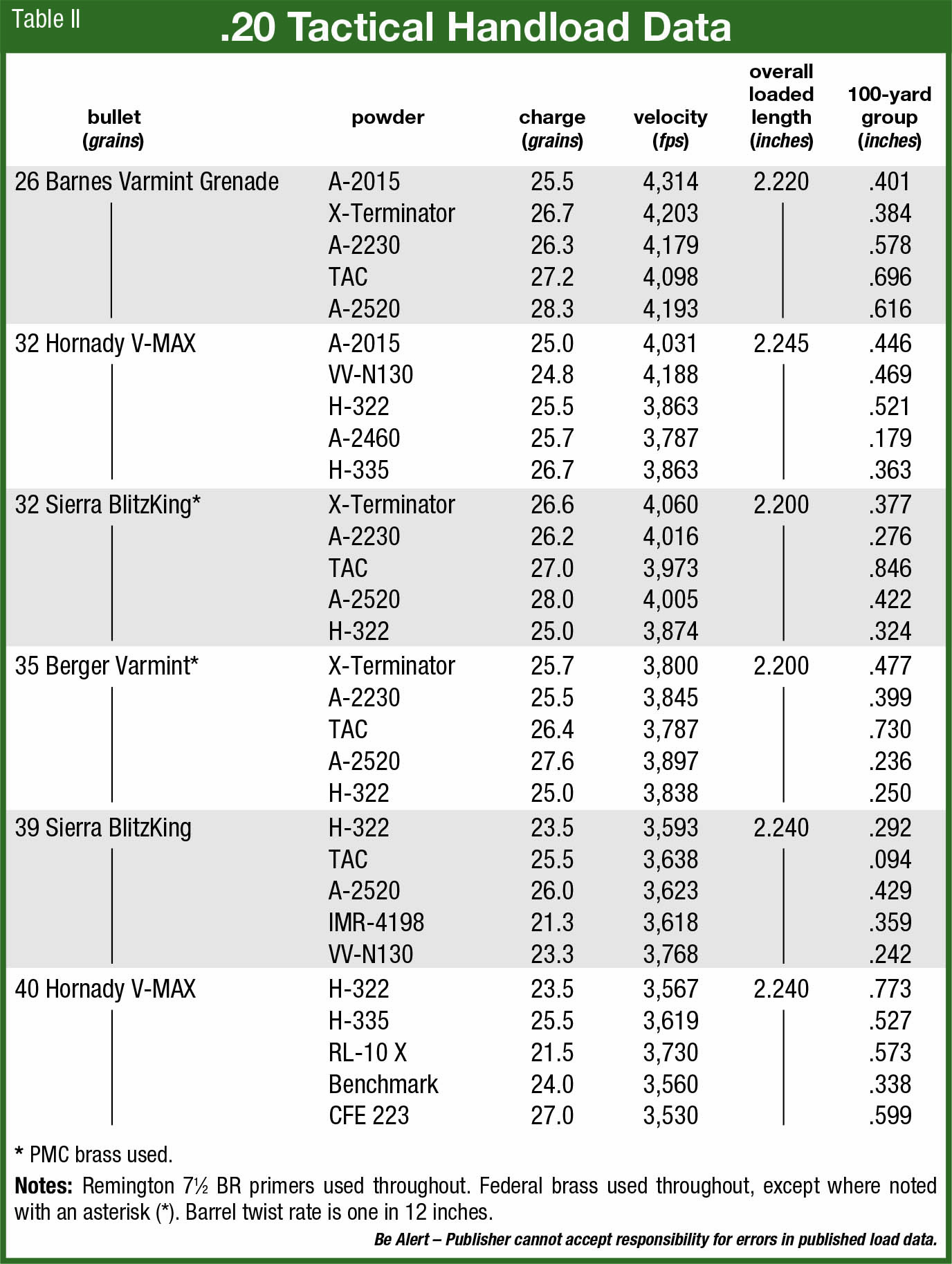.20 Tactical
Handloads for a Wildly Popular Wildcat
other By: R.H. VamDenburg, Jr. | December, 25
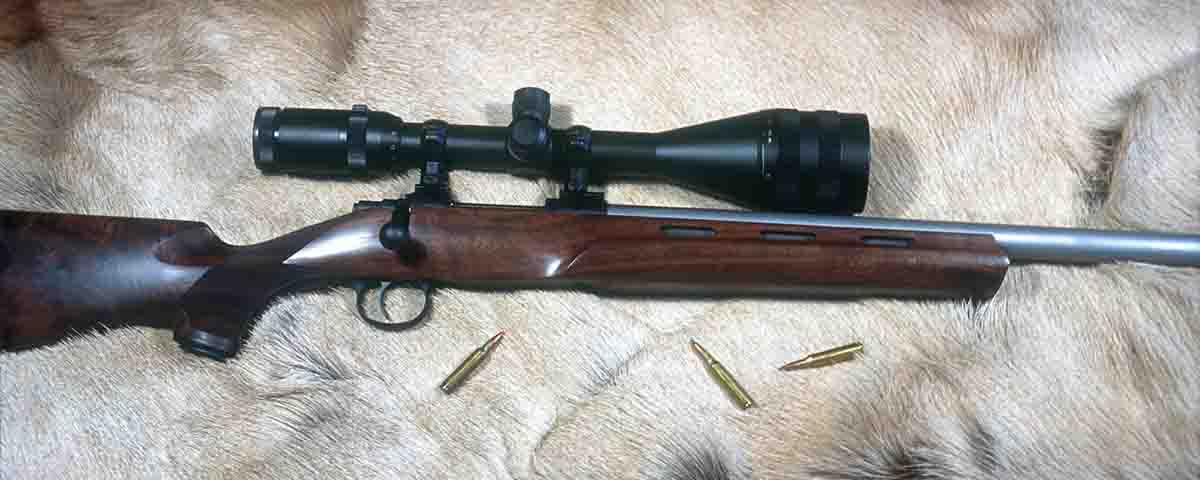
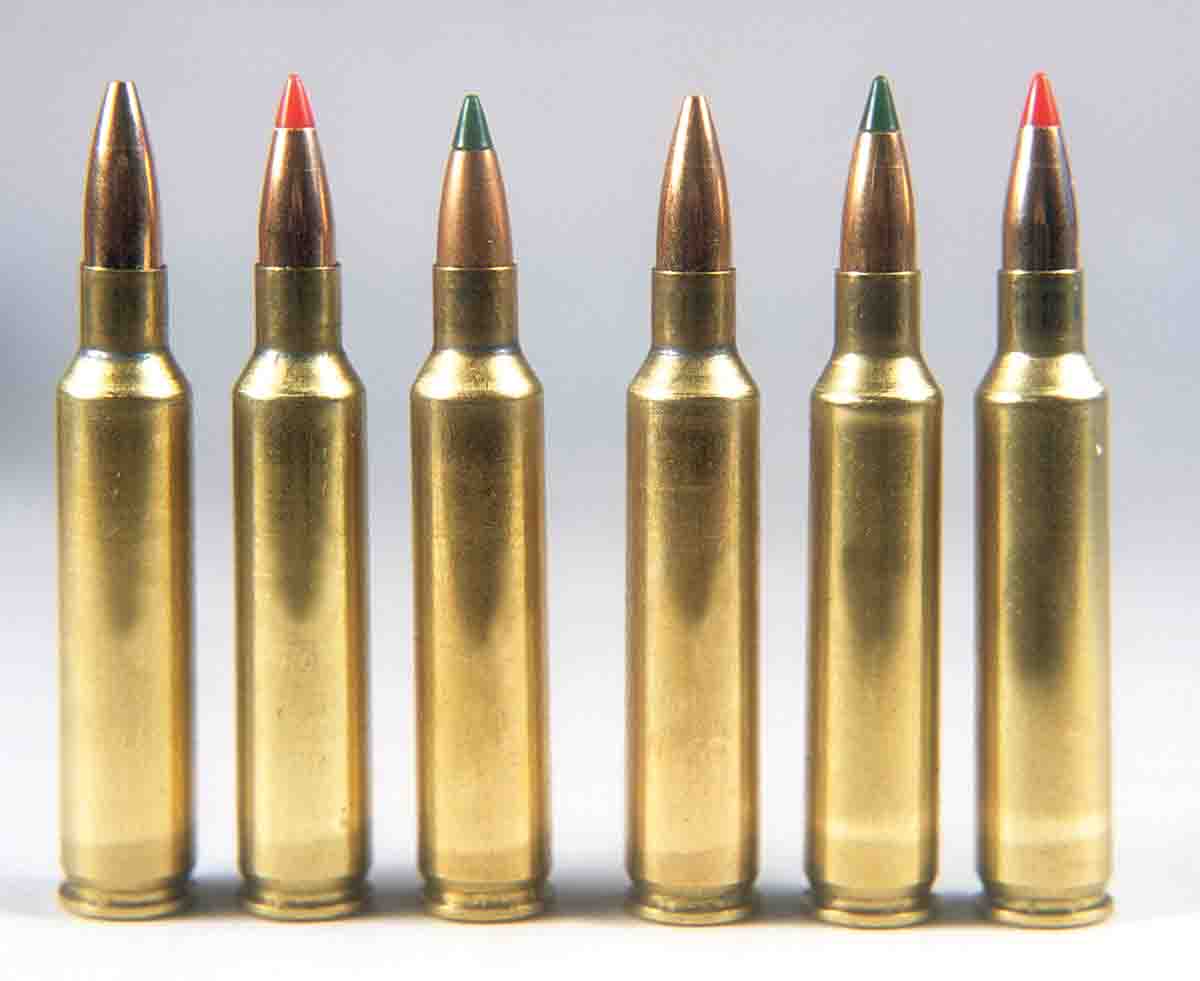
It’s difficult to imagine a small capacity rifle case that hasn’t been necked up or down to .20 caliber. Of the lot, I have to admit having developed a particular fondness for one of them: the .20 Tactical.
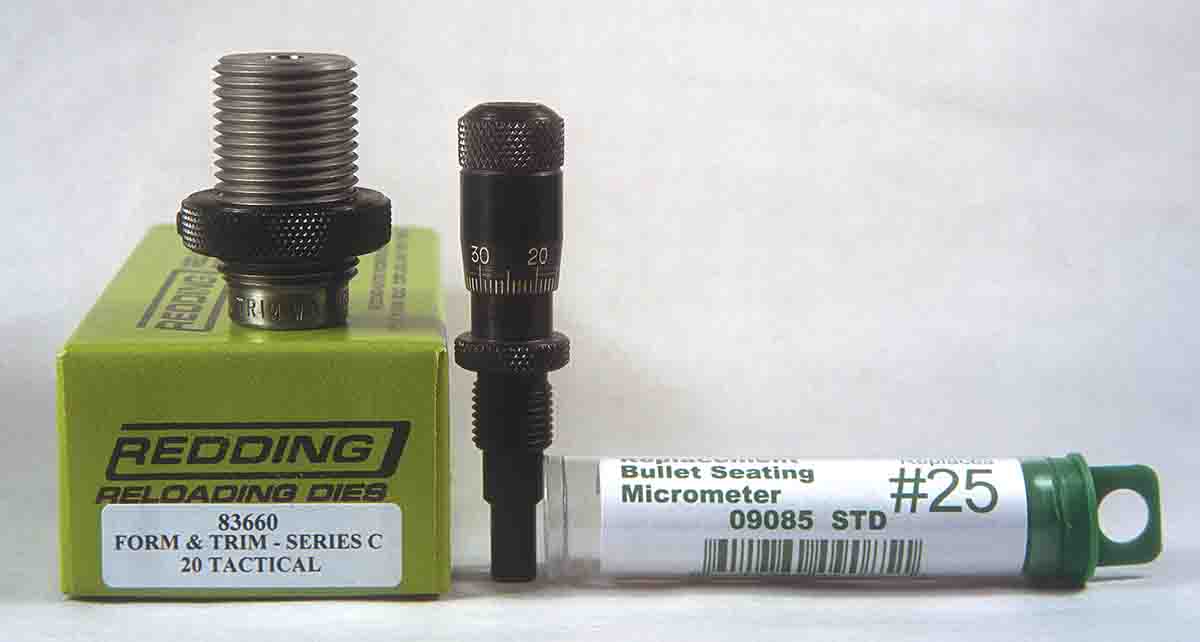
The beauties of the .20s, their fans will tell you, are numerous. Very light recoil in most cases allows the shooter to see the target being hit (or missed). Since all these cartridges are built around a love of varmint hunting, this is an important consideration. Low noise derived from relatively small powder charges in small capacity cases coupled with long barrels plays well in settled areas and among farmers who would prefer to keep things down to a roar. All this adds up to economy as light bullets cost less than heavy ones, and small charges stretch powder budgets satisfyingly.
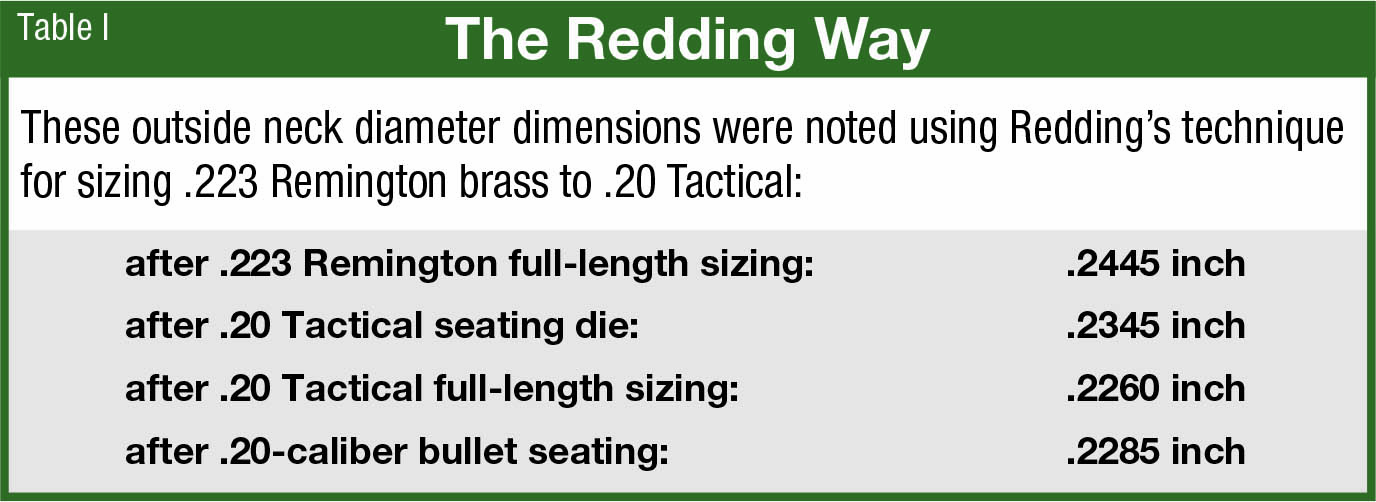
The real beauty of the .20s, however, is in the numbers – ballistic coefficient (BC) numbers, to be specific. For example, the Hornady 40-grain V-MAX has a published BC of .275; that of the Sierra 39-grain BlitzKing is .287. To reach those numbers with a .22-caliber bullet, one must exceed 60 grains in weight. The lighter .20-caliber bullets can be propelled faster too, depending on the cartridge involved. Since wind drift is a function of ballistic coefficient and time of flight, such cartridges as the .20 Tactical tend to shoot flatter, with less wind drift – and do it quieter and at lower cost than comparable .22-caliber cartridges. That is saying a lot. To be fair, in my experience, some of the .22-caliber cartridges provide more explosive hits on such targets as prairie dogs, but to that we must put the question: Are there degrees of dead? The answer is no.
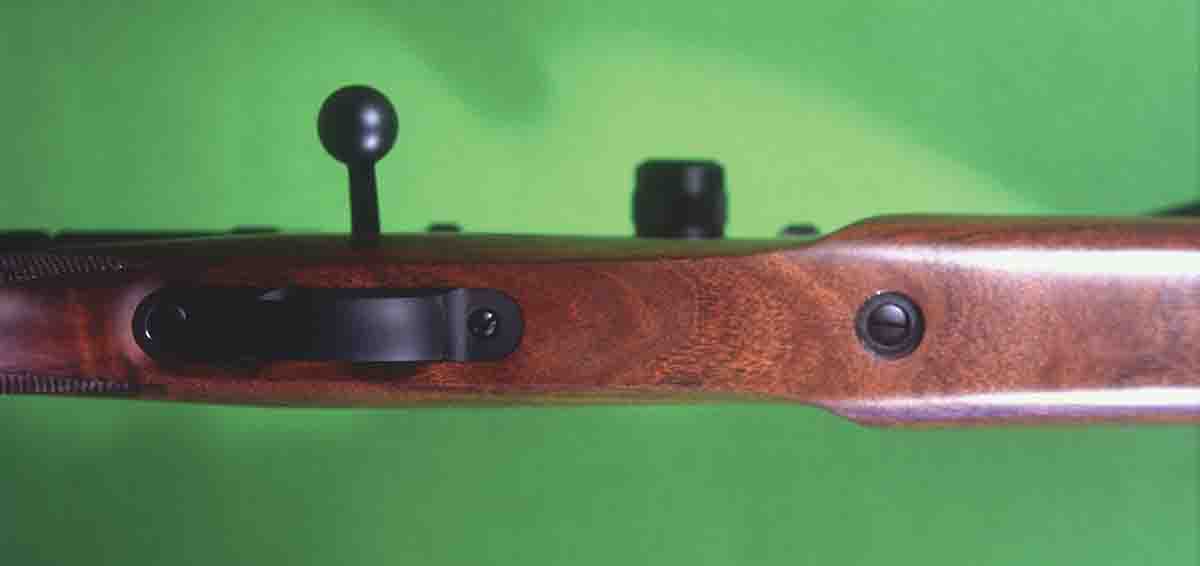
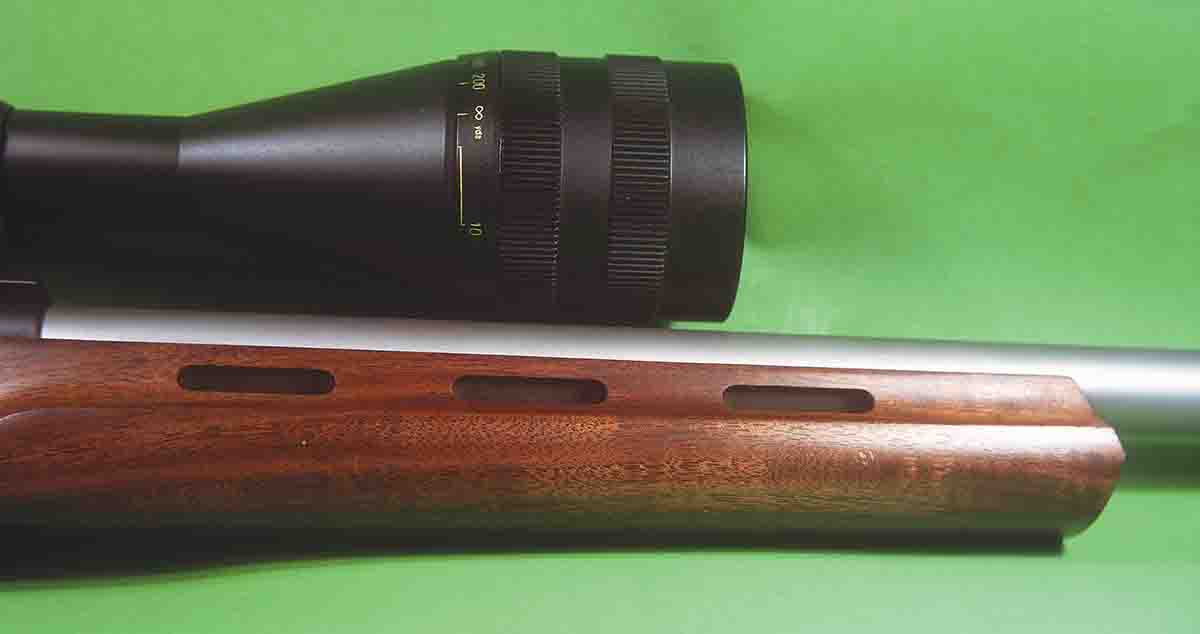
To narrow focus to reloading the .20 Tactical cartridge, let’s begin with the rifle. The one used here is a Cooper Firearms Model 21, a single-shot bolt action. The action is blued; the barrel is stainless steel, in a matte finish, 26 inches long with a one-in-12-inch twist. The bolt has three locking lugs, a Sako-style extractor and a plunger-style ejector. The bolt face completely encloses the head of the cartridge. A raceway cut in the bolt body captures the bolt release on the left side of the receiver and serves to prevent binding. The rifle is very well made, and the stock is the most beautiful I’ve ever seen on a factory rifle. Cooper is well along on this small-caliber journey and chambers its rifles for many of the .17- and .20-caliber cartridges.
I needed reloading dies and turned to Robin Sharpless of Redding Reloading to discuss the project. Redding had .20 Tactical dies in stock along with a form-and-trim die for making cases from .223 Remington brass. Robin sent the form-and-trim die along as well but said I probably wouldn’t need it. Redding had developed, he said, a technique for forming .20 Tactical from .223 Remington brass without it. First the cases are sized in a full-length .223 die, then run, slightly lubricated, into the .20 Tactical seating die. This reduces the neck diameter slightly. Finally, the case is run into the full-length .20 Tactical sizing die that sets the shoulder back and makes the cases ready for fireforming. No trimming is necessary if the cases were the proper length before starting. Nor is there a need for neck turning. (The dimensions through transition are listed in Table I.)
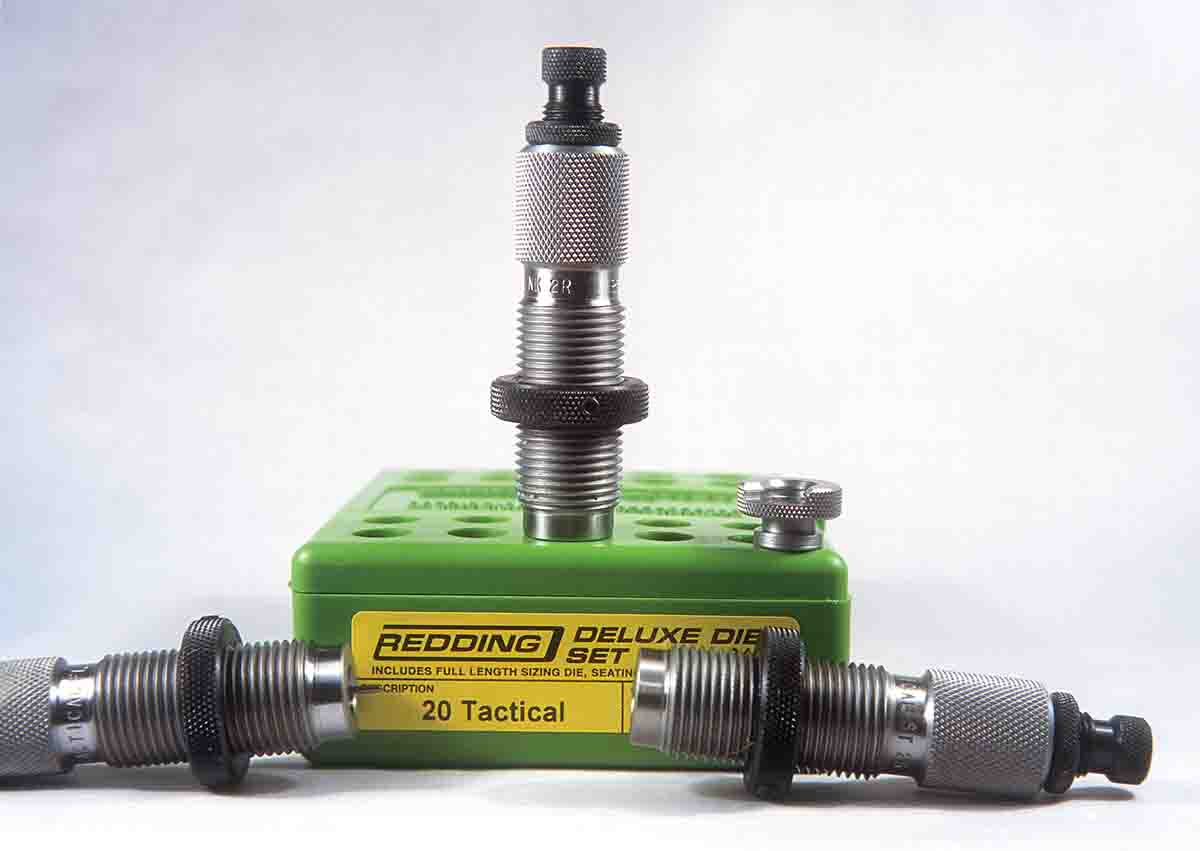
Actually I tried several techniques: simply running sized .223 Remington cases into the .20 Tactical sizing die; first using the form-and-trim die then the .20 Tactical sizing die; and what Sharpless called “the Redding way,” using the .20 Tactical bullet seating die as an intermediate step between the .223 Remington sizer and the .20 Tactical sizer. I came to much prefer the latter as the first was somewhat unsatisfactory and the second left an unsightly “wrinkle” behind the shoulder. This comes out in fireforming, but it didn’t happen when using the .20 Tactical seating die approach.
Part of what makes this interesting is that Kindler, in writing on the subject, found using the form-and-trim die to work best, noting that when he used the .20 Tactical seating die method he experienced those same “wrinkles” behind the shoulder. Why? A different brand of cases, I suspect. He used, as best as I can determine, IMI cases that he rated very highly. PMC and Federal cases were used here, of which I had enough to run the series of tests. So, if you’ve a mind to, try the Redding approach, and if dissatisfied, the form-and-trim die is always available.
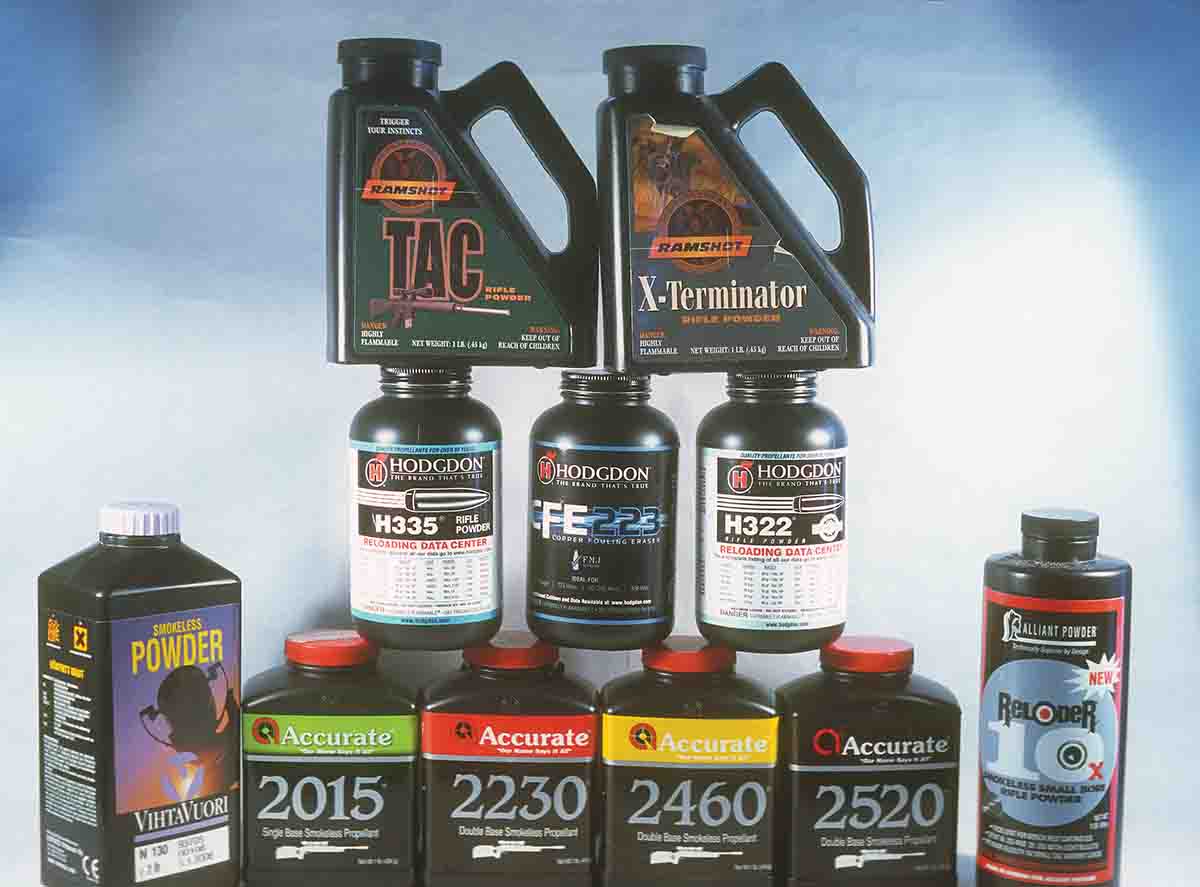
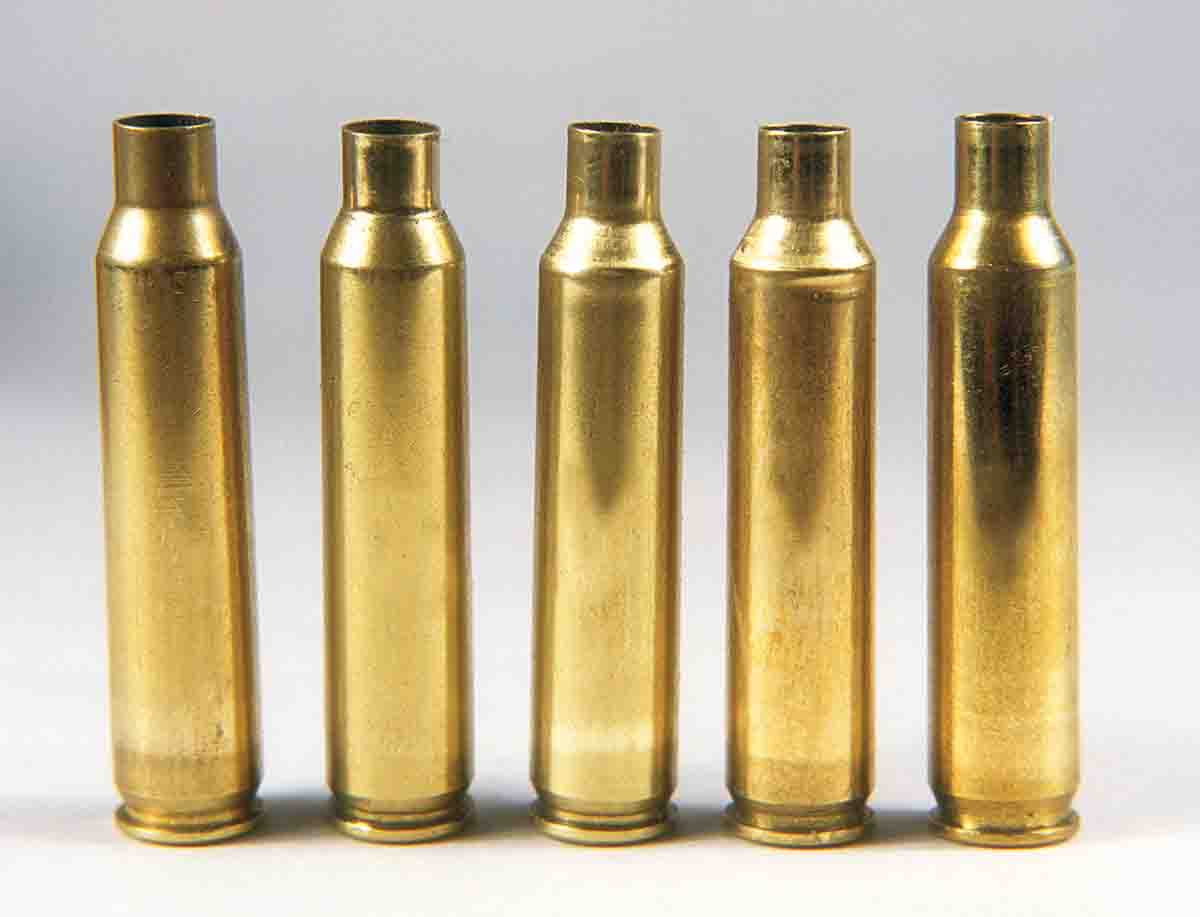
When it came to bullets, quite a number were found, from a Hornady 24-grain lead-free NTX to a 55-grain Berger. I’ve been assured that my one-in-12-inch barrel twist will stabilize all bullet weights up through 45 grains. For heavier ones, a one-in-9-inch twist is recommended, especially at longer ranges. For its 55-grain BT, Berger recommends a one-in-8-inch or faster twist.
For the tests, in purchasing whatever could be found in stores and requesting samples of those I couldn’t from manufacturers, I ended up with the Barnes 26-grain HP Varmint Grenade, Hornady 32-grain V-MAX, Sierra 32-grain BlitzKing, a Berger 35-grain Varmint, a Sierra 39-grain BlitzKing and Hornady’s 40-grain V-MAX. Sufficient for my needs.
When first acquainted with the .20 Tactical some years ago, I was provided loads by Black Hills using TAC powder from Western Powders’ Ramshot line, Hornady 32-grain V-MAX or Sierra 39-grain BlitzKing bullets, all in Winchester cases. This time, accompanying my rifle when it arrived was a laminated target with an elongated hole in it denoting a three-shot group at 100 yards measuring .156 inch. The particulars were the Hornady 32-grain V-MAX bullet and H-322 powder. When running tests with the above bullets and a variety of powders, the best results occurred with the Sierra 39-grain BlitzKing, closely followed by the Hornady 32-grain V-MAX. There seemed to be a pattern emerging.
When it came to powders, a baker’s dozen that had been given some play in published data was selected. After much loading and shooting, I must agree with those who say that all the powders tested performed well. At the same time, it appears some rise above the norm. Among single-base, extruded powders, Hodgdon H-322 and Vihtavuori N130 produced the best results for me, with IMR-4198 and Accurate 2015 not far behind. Among ball, or spherical, powders, I’d have to give the nod to Accurate 2230 and 2520 with Ramshot X-Terminator and Hodgdon H-335 trailing, but not by much. Ramshot TAC, for which I had great expectations, didn’t hold up as well in extended testing but did produce the smallest group, with the Sierra 39-grain BlitzKings – and the largest, which may have been a case of shooter error. Perhaps it is at its best with the heavier bullets. Reduced to two powders, I’d go with H-322 and VV-N130.
The project has been great fun, and I’ve never shot as many three-shot groups with all bullets making a single hole as was experienced with the .20 Tactical. Most of the credit must go to the fine Cooper rifle and good bullets, but the cartridge design is certainly entitled to its share.
.20 Tactical Resources
The Woodchuck Den, Inc.
11220 Hilltop Rd., SW
Baltic OH 43804
woodchuckden.com
Cooper Firearms of Montana, Inc.
PO Box 114
3662 Highway 93 North
Stevensville MT 59870
cooperfirearms.com
Redding Reloading
1089 Starr Rd.
Cortland NY 13045
redding-reloading.com
Barnes Bullets, Inc.
PO Box 620
Mona UT 84645
(800) 574-9200
barnesbullets.com
Hornady Mfg Co.
PO Box 1848
3625 Old Potash Hwy
Grand Island NE 68803
hornady.com
Berger Bullets, Inc.
4275 N. Palm St.
Fullerton CA 92835
bergerbullets.com
Sierra Bullets
1400 West Henry St.
Sedalia MO 65301
(888) 223-3006
sierrabullets.com


